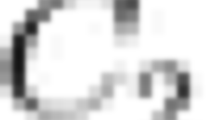Abstract
Ranking is the problem of computing for an input string its lexicographic index in a given (fixed) language. This paper concerns the complexity of ranking. We show that ranking languages accepted by 1-way unambiguous auxiliary pushdown automata operating in polynomial time is inNC (2). We also prove negative results about ranking for several classes of simple languages.C is rankable in deterministic polynomial time iffP=P #P, whereC is any of the following six classes of languages: (1) languages accepted by logtime-bounded nondeterministic Turing machines, (2) languages accepted by (uniform) families of unbounded fan-in circuits of constant depth and polynomial size, (3) languages accepted by 2-way deterministic pushdown automata, (4) languages accepted by multihead deterministic finite automata, (5) languages accepted by 1-way nondeterministic logspace-bounded Turing machines, and (6) finitely ambiguous linear context-free languages.
Similar content being viewed by others
References
Allender, E.: Invertible Functions, Ph.D. Thesis, Georgia Institute of Technology, 1985.
Bertoni, A., Goldwurm, M., and Sabadini, N.: Computing the Counting Function of Context-Free Languages,Proc. 4th Symposium on Theoretical Aspects of Computer Science, LNCS 247, pp. 169–179, 1987.
Brandenburg, F.-J.: On One-Way Auxiliary Pushdown Automata,Proc. 3rd GI Conference on Theoretical Computer Science, LNCS 48, pp. 131–144, 1977.
Buss, S.: The Boolean Formula Value Problem Is in ALOGTIME,Proc. 19th ACM Symposium on Theory of Computing, pp. 123–131, 1987.
Chandra, A., Kozen, D., and Stockmeyer, L.: Alternation,J. Assoc. Comput. Mach.,28, pp. 114–133, 1981.
Chang, J. H., Ibarra, O. H., Palis, M. A., and Ravikumar, B.: On Pebble Automata,Theoret. Computer Sci.,44, pp. 111–121, 1986.
Cook, S.: Path Systems and Language Recognition,Proc. 2nd ACM Symposium on Theory of Computing, pp. 70–72, 1970.
Cook, S.: Characterizations of Pushdown Machines in Terms of Time-Bounded Computers,J. Assoc. Comput. Mach.,18, pp. 4–18, 1971.
Cook, S.: A Taxonomy of Problems with Fast Parallel Algorithms,Inform. and Control,64, pp. 2–22, 1985.
Fortune, S., and Wyllie, J.: Parallelism in Random Access Machines,Proc. 10th ACM Symposium on Theory of Computing, pp. 114–118, 1978.
Ginsburg, S., and Spanier, E.: Finite-Turn Pushdown Automata,SIAM J. Control Optim.,4, pp. 429–453, 1966.
Goldberg, A., and Sipser, M.: Compression and Ranking,Proc. 17th ACM Symposium on Theory of Computing, pp. 440–448, 1985.
Gurari, E., and Ibarra, O.: Path Systems: Constructions, Solutions, and Applications,SIAM J. Comput.,9, pp. 348–374, 1980.
Hartmanis, J.: Context-Free Languages and Turing Machine Computations,Proc. Symposium on Applied Mathematics, pp. 42–51, 1967.
Hemachandra, L.: On Ranking,Proc. 2nd Annual Conference on Structure in Complexity Theory, pp. 103–117, 1987.
Hopcroft, J., and Ullman, J.:Introduction to Automata Theory, Languages, and Computation, Addison-Wesley, Reading, MA, 1979.
Ruzzo, W.: Tree-Size Bounded Alternation,J. Comput. System Sci.,21, pp. 218–235, 1980.
Ruzzo, W.: On Uniform Circuit Complexity,J. Comput. System Sci.,22, pp. 365–383, 1981.
Sipser, M.: Borel Sets and Circuits Complexity,Proc. 15th ACM Symposium on Theory of Computing, pp. 61–69, 1983.
Stockmeyer, L., and Vishkin, U.: Simulation of Random Access Machines by Circuits,SIAM J. Comput.,13, pp. 409–422, 1984.
Sudborough, I.: Relating Open Problems on the Tape Complexity of Context-Free Languages and Path Systems Problems,Proc. 12th Annual Johns Hopkins Conference on Information Sciences and Systems, pp. 329–335, 1978.
Valiant, L.: The Complexity of Computing the Permanent,Theoret. Comput. Sci.,8, pp. 189–201, 1979.
Yao, A.: Separating the Polynomial-Time Hierarchy by Oracles,Proc. 26th IEEE Symposium on Foundations of Computer Science, pp. 1–10, 1985.
Yao, A., and Rivest, R.:k+1 Heads Are Better thank, J. Assoc. Comput. Mach.,25, pp. 337–340, 1978.
Author information
Authors and Affiliations
Additional information
This research was partially supported by the National Science Foundation under Grant DCR-8696097. A preliminary version of this paper was presented at the 3rd Annual Structure in Complexity Theory Conference, Washington, DC, June 1988.
Rights and permissions
About this article
Cite this article
Huynh, D.T. The complexity of ranking simple languages. Math. Systems Theory 23, 1–19 (1990). https://doi.org/10.1007/BF02090763
Received:
Revised:
Issue Date:
DOI: https://doi.org/10.1007/BF02090763




